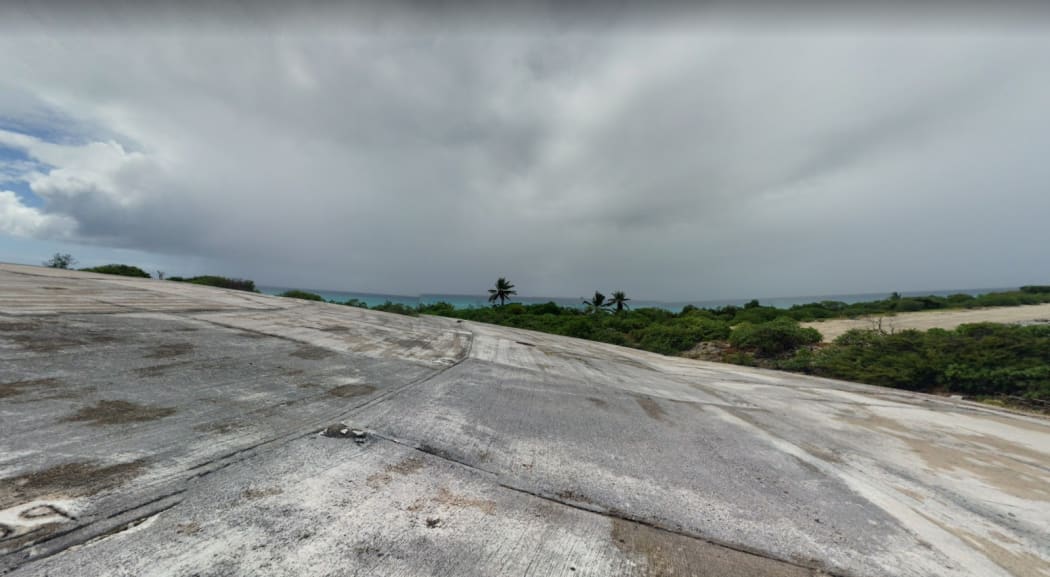The Marshall Islands government will survey a leaking nuclear-filled dome after growing international concern over the structure.
The country's Nuclear Commission says work is due to start by the end of the year studying the impact of the structure on Enewetak Atoll.
It comes after the Pacific Islands Forum Secretary General, Dame Meg Taylor, called for an audit of the nuclear dome to determine if it was leaking.
Her UN counterpart, Antonio Guterres, has also raised concerns about the potential radioactive fallout.
The Nuclear Commission's chairperson, Rhea Moss-Christian explained what the survey will look at.

The nuclear waste dome caps the site of a 1952 hydrogen bomb test site.
Photo: Google
Transcript
Rhea Moss-Christian: So the National Nuclear Commission is pulling together a study, an independent survey of the dome to review some of the ... findings, and also to try to answer some lingering questions about the status of the dome and especially the way that the contaminants in the dome are moving between the shore and the lagoon.
Mackenzie Smith: So are you already aware that it is leaking out? Some of this nuclear waste?
RMC: Yeah, the DOE (US Department of Energy) has already confirmed that the groundwater beneath the dome is mixing with the lagoon water during tidal searches and high tide. What they've told us based on their research is that they're unable to determine how much of the contamination in the lagoon is coming from the dome. This is part of what their groundwater program is trying to do, is to measure the amount of contamination from the dome that's going into the lagoon.
MS: And how long is this research expected to take? When can we expect to see action on this?
RMC: The survey that we're putting together from the nuclear commission side, could take up to three years. DOE's groundwater monitoring program is ongoing, and at the moment is delayed by availability of funding from Department of Interior.
MS: There's also been research more broadly in the Marshall Islands showing these higher concentrations of nuclear radiation, in some cases more than areas near Chernobyl. How concerning is this?
RMC: Well, it's a huge concern for us. We've been relying for years on the data provided by the US through the Department of Energy studies. And we haven't had a clear enough picture for many years, the research by Columbia University really looked at the status of food crops in the islands, which was really important for especially local communities. And they did some research other islands that had not been previously surveyed by DOE and found alarming levels of radiation. This certainly for us signals the need for more research, for more data to be produced, and to have some independent peer review, as well of some of these findings.
To embed this content on your own webpage, cut and paste the following:
See terms of use.


